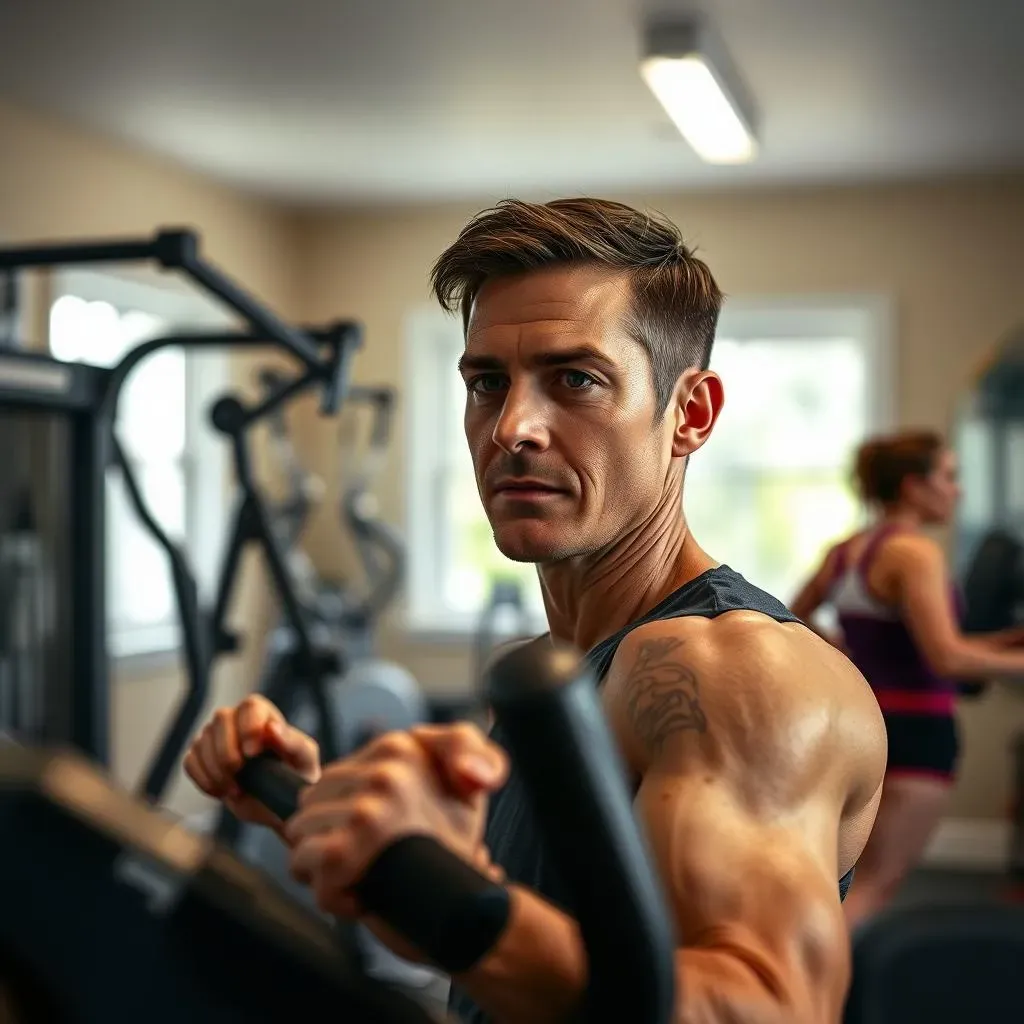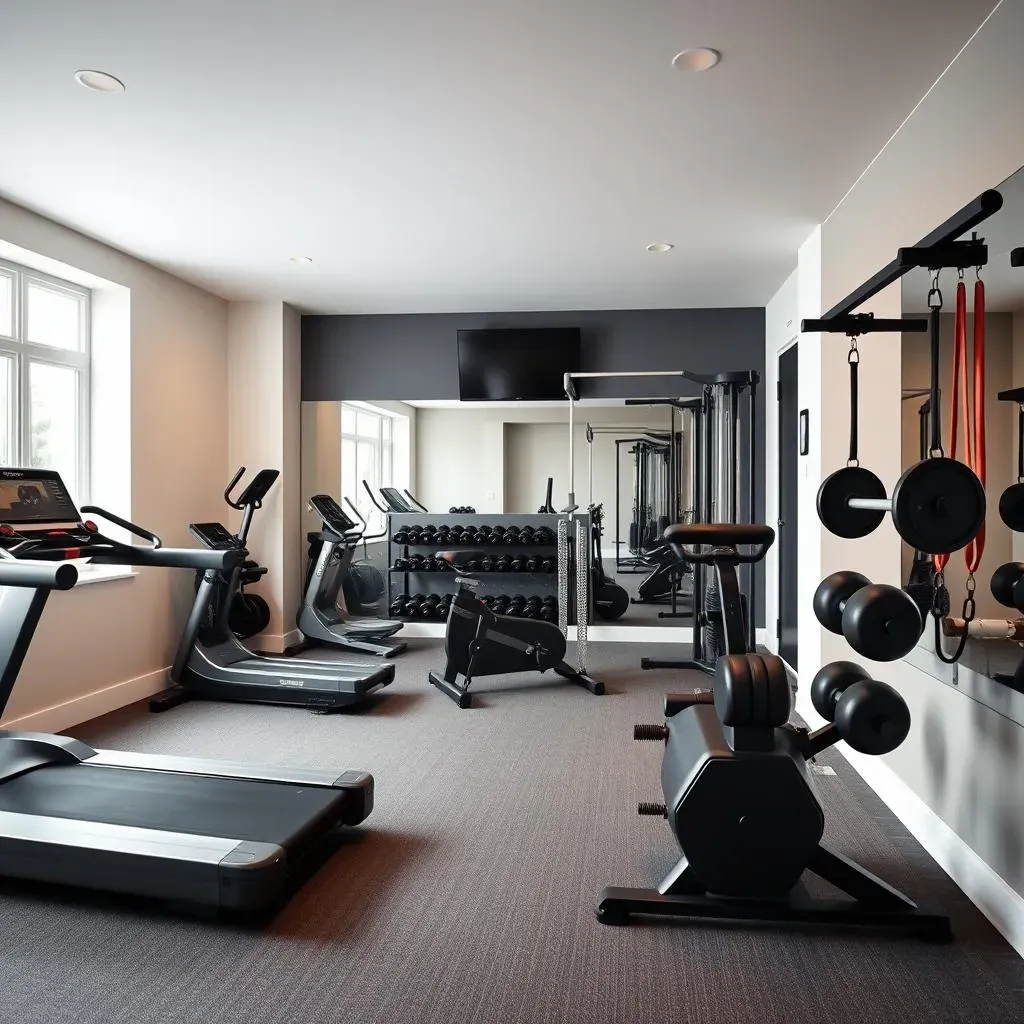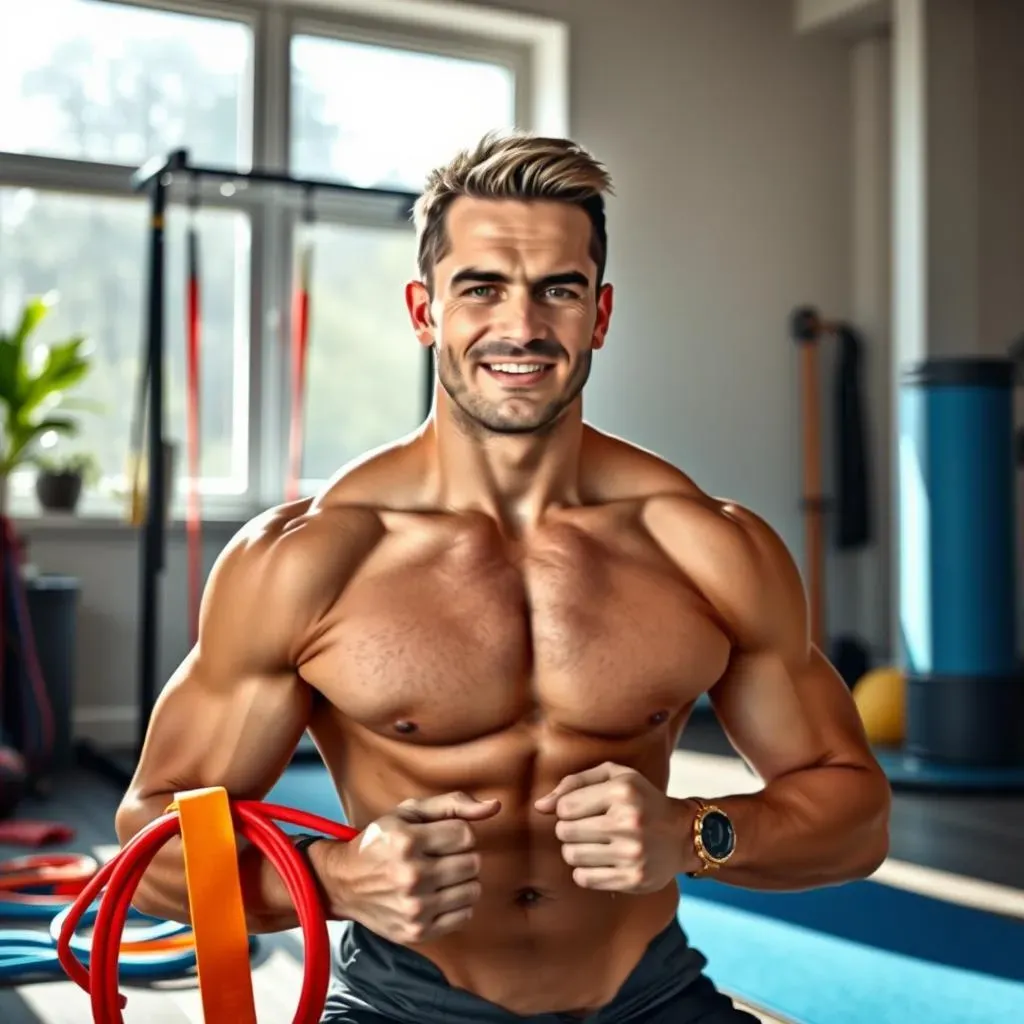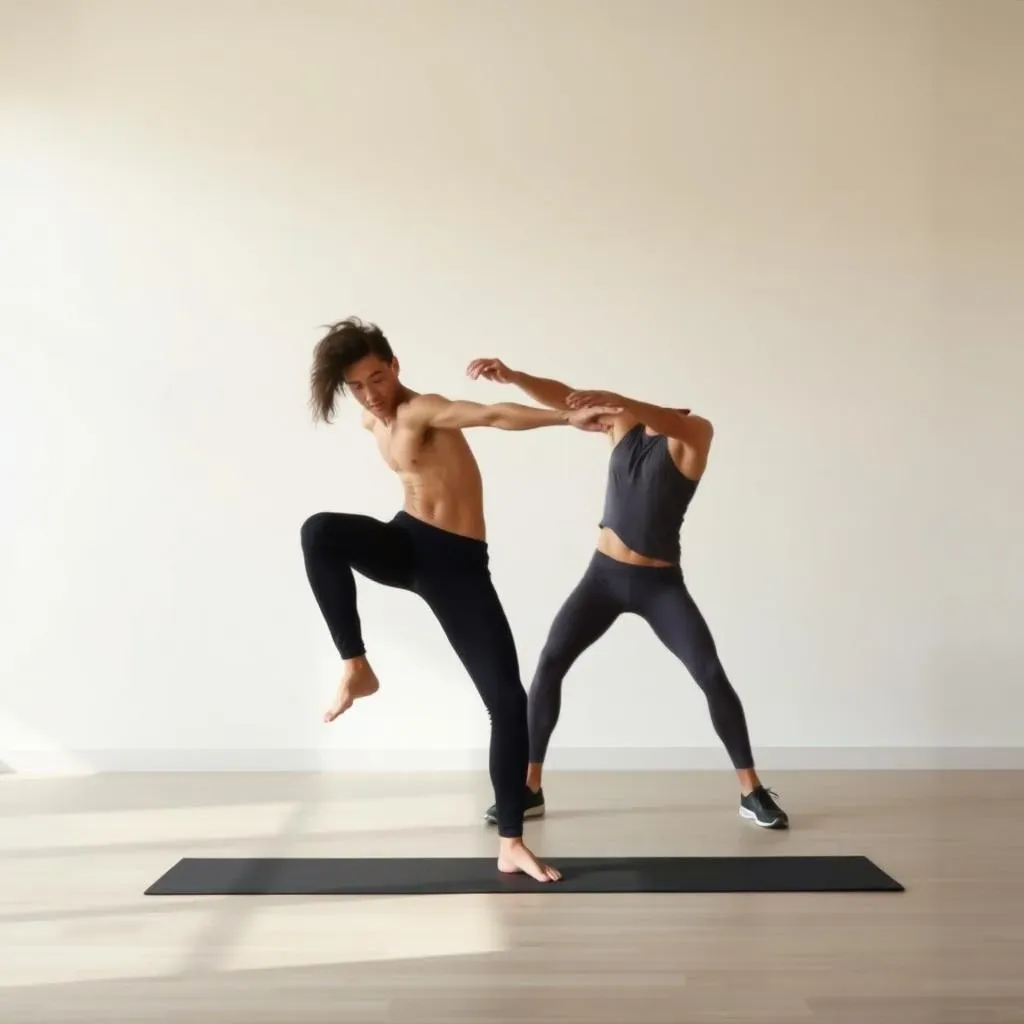Table of Contents
Tired of crowded gyms and membership fees? Thinking about building your own workout haven but wondering, what machines do I need for a home gym? You're not alone. Creating a home gym can feel overwhelming, but it doesn't have to be. This guide will walk you through everything from assessing your space and fitness goals to selecting the right equipment – without breaking the bank. We'll explore the core benefits of having a home gym, helping you ditch the excuses and embrace convenient fitness. Then, we'll dive into planning your space, considering factors like room size and layout. Next, we'll break down essential machines for a full-body workout, including options for strength training and cardio. Don't have a huge budget? No problem! We'll also cover budget-friendly alternatives and how to create effective routines with minimal equipment. So, whether you're a seasoned athlete or just starting your fitness journey, let's build a home gym that works for you!
Benefits of Building Your Own Home Gym
Benefits of Building Your Own Home Gym
Time is on Your Side
Let's face it, carving out time for the gym can feel like a Herculean task. Between work, family, and social obligations, squeezing in a workout often falls to the bottom of the to-do list. That's where a home gym shines. No more battling rush hour traffic to get to the gym, only to find your favorite machine occupied. A home gym eliminates travel time, allowing you to fit in a quick workout whenever you have a spare moment. Think of all those hours reclaimed – you could use them for extra sleep, meal prepping, or simply relaxing!
Plus, a home gym is ALWAYS open. Forget about gym hours or holiday closures. Whether you're an early bird or a night owl, your gym is ready whenever you are. This flexibility makes it easier to establish a consistent workout routine, which is key to achieving your fitness goals. I remember one winter where the roads were so bad, I couldn't make it to the gym for a week. With a home setup, that wouldn't have been an issue!
Say Goodbye to Gym Fees (and Germs!)
Gym memberships can be expensive, especially if you opt for premium facilities or personal training. Over time, these costs add up, potentially draining your wallet. Building a home gym involves an initial investment, but it can save you money in the long run by eliminating monthly fees. Think of it as an investment in your health and well-being that pays off over time. You could put that money towards new workout gear, healthier food, or even a vacation!
And let's not forget about the hygiene factor. Public gyms are breeding grounds for germs, with countless people touching the same equipment. A home gym offers a cleaner, more private workout environment. You control the cleanliness and sanitation, reducing your risk of catching colds or other illnesses. It's a win-win for your health and your wallet.
Benefit | Description |
|---|---|
Time Savings | Eliminates travel time, allowing for more flexible workout schedules. |
Cost Savings | Reduces or eliminates monthly gym membership fees. |
Convenience | Provides 24/7 access to workout equipment. |
Hygiene | Offers a cleaner and more private workout environment. |
Workout Your Way, Every Day
One of the best things about having a home gym is the ability to customize it to your specific needs and preferences. You get to choose the equipment you want, the music you listen to, and the overall atmosphere. No more waiting for machines or feeling self-conscious in front of strangers. Your home gym is your personal sanctuary, a space where you can focus on your fitness goals without distractions. Want to blast heavy metal while lifting weights? Go for it! Prefer a quiet yoga session with calming music? The choice is yours.
This level of customization can significantly enhance your motivation and enjoyment of exercise. When you create a workout environment that you love, you're more likely to stick with it long-term. Plus, you can tailor your workouts to your specific goals, whether it's building strength, improving cardiovascular fitness, or simply relieving stress. Building a home gym is like creating a personalized fitness experience that's designed to help you succeed.
Space Considerations: Planning Your Home Gym Layout
Space Considerations: Planning Your Home Gym Layout
Assess Your Available Space
Alright, so you're pumped about building a home gym, but hold your horses! Before you start drooling over treadmills and weight racks, take a good, hard look at your available space. Is it a spare bedroom, a corner of the basement, or maybe even the garage? Measure the area carefully and consider the ceiling height, especially if you're planning on doing overhead exercises or installing a pull-up bar. Trust me, you don't want to be banging your head on the ceiling mid-squat!
Think about the shape of the room too. A long, narrow space might be perfect for a treadmill, while a square room could be better suited for strength training equipment. And don't forget about windows and doors – you'll want to make sure they're not obstructed by equipment. I once tried to set up a weight bench in front of a window, only to realize I couldn't open it for ventilation. Rookie mistake!
Consider Your Fitness Goals
Now that you've assessed your space, it's time to think about your fitness goals. What are you hoping to achieve with your home gym? Are you looking to build muscle, improve your cardiovascular fitness, or simply stay active? Your goals will heavily influence the type of equipment you need and how you arrange your space. For example, if you're primarily focused on strength training, you'll need space for weights, a bench, and maybe a power rack. If cardio is your thing, a treadmill or elliptical machine might be a priority.
Also, think about the types of exercises you enjoy doing. If you love yoga or Pilates, you'll need a clear, open space for your mat. If you're into CrossFit, you'll want room for functional movements like burpees and box jumps. The key is to create a space that supports your favorite activities and motivates you to work out.
Prioritize Functionality and Flow
Once you have a clear idea of your space and goals, it's time to start planning the layout of your home gym. The goal is to create a functional and efficient space that allows you to move freely and safely. Start by placing larger equipment items first, such as treadmills or weight racks. Then, arrange smaller items around them, leaving enough space for walking and exercising. Make sure there's enough room to perform exercises without bumping into walls or equipment. Safety first!
Consider the flow of your workout. Try to arrange the equipment in a way that makes sense for your routine. For example, you might want to place your weight bench near your dumbbell rack for easy access. Or, you could create a circuit training area with different stations for cardio, strength, and core exercises. The key is to design a space that's both functional and aesthetically pleasing. After all, you'll be spending a lot of time in your home gym, so you might as well make it a place you enjoy being!
Essential Home Gym Machines for a FullBody Workout
Essential Home Gym Machines for a FullBody Workout
The Big Three: Cardio, Strength, and Flexibility
so you're ready to stock your home gym with some serious equipment. But where do you even start? The key is to focus on machines that target all major muscle groups and provide a well-rounded workout. Think about the "big three" components of fitness: cardiovascular health, strength training, and flexibility. You'll want machines that help you improve in each of these areas. Remember, it's not about having the fanciest or most expensive equipment; it's about having the right tools to achieve your goals. For me, that meant starting with a basic treadmill and a set of adjustable dumbbells. Everything else was gravy!
Cardio Powerhouses: Treadmills, Ellipticals, and Bikes
When it comes to cardio, you have several options to choose from, each with its own benefits. Treadmills are great for running and walking, providing a high-impact workout that burns a lot of calories. Ellipticals offer a lower-impact alternative, engaging both your upper and lower body while minimizing stress on your joints. Stationary bikes are another excellent choice, especially if you prefer a seated workout. Consider your personal preferences and any physical limitations when selecting a cardio machine. If you have bad knees, an elliptical might be a better option than a treadmill. If you hate running, a bike might be more appealing.
Strength Training Staples: Dumbbells, Barbells, and Resistance Machines
For strength training, dumbbells and barbells are essential. Dumbbells allow for a wide range of exercises, targeting individual muscle groups and improving balance. Barbells are ideal for compound exercises like squats, deadlifts, and bench presses, which work multiple muscle groups simultaneously. Resistance machines offer a more controlled and guided workout, making them a good option for beginners or those with injuries. A basic set of adjustable dumbbells is a great starting point for any home gym. As you progress, you can add a barbell and weight plates to increase the intensity of your workouts.
Machine Type | Benefits | Considerations |
|---|---|---|
Treadmill | High-impact cardio, burns calories quickly | Can be hard on joints, requires more space |
Elliptical | Low-impact cardio, engages upper and lower body | Can feel less intense than a treadmill |
Stationary Bike | Low-impact cardio, good for seated workouts | May not engage upper body as much |
Dumbbells | Versatile, targets individual muscle groups | Requires some knowledge of proper form |
Barbell | Ideal for compound exercises, builds overall strength | Requires more space and weight plates |
BudgetFriendly Alternatives to Expensive Gym Machines
BudgetFriendly Alternatives to Expensive Gym Machines
DIY Fitness: Saving Money Without Sacrificing Results
So, you're on a budget but still want a killer workout? No sweat! The good news is you don't need to drop a fortune on fancy gym machines to get in shape. There are plenty of budget-friendly alternatives that can deliver similar results. Think of it as getting creative with your fitness. Instead of a $2,000 treadmill, maybe it's time to rediscover the joy of running outdoors. Instead of a bulky cable machine, let's explore the power of resistance bands. I've seen people transform their bodies with just a few simple pieces of equipment and a whole lot of determination. It's all about making the most of what you have!
Resistance Bands: Your Portable Gym
Resistance bands are a game-changer for budget-conscious fitness enthusiasts. These versatile bands come in various resistance levels, allowing you to target different muscle groups and adjust the intensity of your workouts. They're lightweight, portable, and can be used for a wide range of exercises, from bicep curls and squats to rows and lateral raises. Plus, they're super affordable! A good set of resistance bands can cost less than a month's gym membership and can provide a full-body workout. I always pack a set of resistance bands when I travel – they're perfect for staying in shape on the go!
Bodyweight Training: Your Ultimate Free Resource
Don't underestimate the power of your own bodyweight! Bodyweight exercises like push-ups, squats, lunges, planks, and burpees are incredibly effective for building strength, improving endurance, and burning calories. And the best part? They require absolutely no equipment! You can do them anywhere, anytime. Bodyweight training is a fantastic way to build a solid foundation of fitness before investing in more expensive equipment. Plus, it's a great way to challenge yourself as you progress. Try variations like incline push-ups, pistol squats, or plyometric lunges to keep things interesting.
Alternative | Original Machine | Benefits |
|---|---|---|
Resistance Bands | Cable Machine | Affordable, portable, versatile |
Bodyweight Exercises | Various Strength Machines | Free, convenient, effective |
Jump Rope | Treadmill | Low-cost cardio, burns calories quickly |
Used Equipment | New Equipment | Significant cost savings |
Creating a Workout Routine with Minimal Equipment
Creating a Workout Routine with Minimal Equipment
The Power of Simplicity: Designing Your Minimalist Workout
so you've embraced the idea of a minimalist home gym. Now, let's talk about creating a workout routine with minimal equipment that actually delivers results. The key here is to focus on compound exercises – movements that work multiple muscle groups simultaneously. Think squats, push-ups, lunges, rows, and planks. These exercises are incredibly efficient and effective, allowing you to get a full-body workout without needing a ton of fancy equipment. I like to start with a warm-up of light cardio and dynamic stretching, then move into the main workout, followed by a cool-down and static stretching. Keep it simple, keep it consistent, and you'll be amazed at what you can achieve!
When designing your routine, consider your fitness level and goals. If you're a beginner, start with fewer repetitions and sets, gradually increasing the intensity as you get stronger. If you're more advanced, you can add variations to the exercises to make them more challenging. For example, try doing push-ups with your feet elevated, or lunges with a jump. The possibilities are endless! The most important thing is to listen to your body and avoid pushing yourself too hard, especially when you're first starting out.
Sample Minimalist Workout Routine
Alright, let's get practical. Here's a sample workout routine you can do with minimal equipment – just your bodyweight and maybe a set of resistance bands:
- Warm-up: 5 minutes of light cardio (jumping jacks, high knees) and dynamic stretching (arm circles, leg swings)
- Workout:
- Squats: 3 sets of 12-15 repetitions
- Push-ups: 3 sets of as many repetitions as possible (AMRAP)
- Lunges: 3 sets of 10-12 repetitions per leg
- Plank: 3 sets, holding for 30-60 seconds
- Rows (with resistance band): 3 sets of 12-15 repetitions
- Cool-down: 5 minutes of static stretching (holding each stretch for 30 seconds)
This workout targets all major muscle groups and can be easily modified to suit your fitness level. You can add more sets or repetitions as you get stronger, or try different variations of the exercises to keep things challenging. Remember to focus on proper form and listen to your body. If you're feeling any pain, stop the exercise and rest.
Exercise | Sets | Reps | Equipment |
|---|---|---|---|
Squats | 3 | 12-15 | Bodyweight |
Push-ups | 3 | AMRAP | Bodyweight |
Lunges | 3 | 10-12 per leg | Bodyweight |
Plank | 3 | 30-60 seconds | Bodyweight |
Rows | 3 | 12-15 | Resistance Band |
Progression is Key: Keeping it Challenging
To continue seeing results, you need to progressively overload your muscles. This means gradually increasing the intensity of your workouts over time. There are several ways to do this with minimal equipment. You can increase the number of repetitions or sets, decrease the rest time between sets, or add variations to the exercises to make them more challenging. For example, try doing single-leg squats instead of regular squats, or diamond push-ups instead of regular push-ups. You can also use resistance bands to add extra resistance to your exercises. The key is to constantly challenge your body and prevent it from adapting to the same routine.
Another great way to progress is to focus on improving your form. As you get stronger, pay attention to the details of each exercise and try to perfect your technique. This will not only help you prevent injuries but also allow you to engage your muscles more effectively. Remember, it's not just about going through the motions; it's about consciously contracting your muscles and controlling the movement throughout the entire exercise.
Final Thoughts: Your Personalized Path to Home Fitness
Building a home gym is a journey, not a race. Start by defining your fitness goals and assessing your available space and budget. Choose equipment that aligns with your needs and preferences, prioritizing versatility and long-term use. Remember, you don't need every fancy machine to achieve a great workout. Bodyweight exercises and a few key pieces of equipment can be incredibly effective. The most important thing is to create a sustainable workout routine that you enjoy and stick with. So, take the plunge, invest in your health, and transform your home into your personal fitness sanctuary!